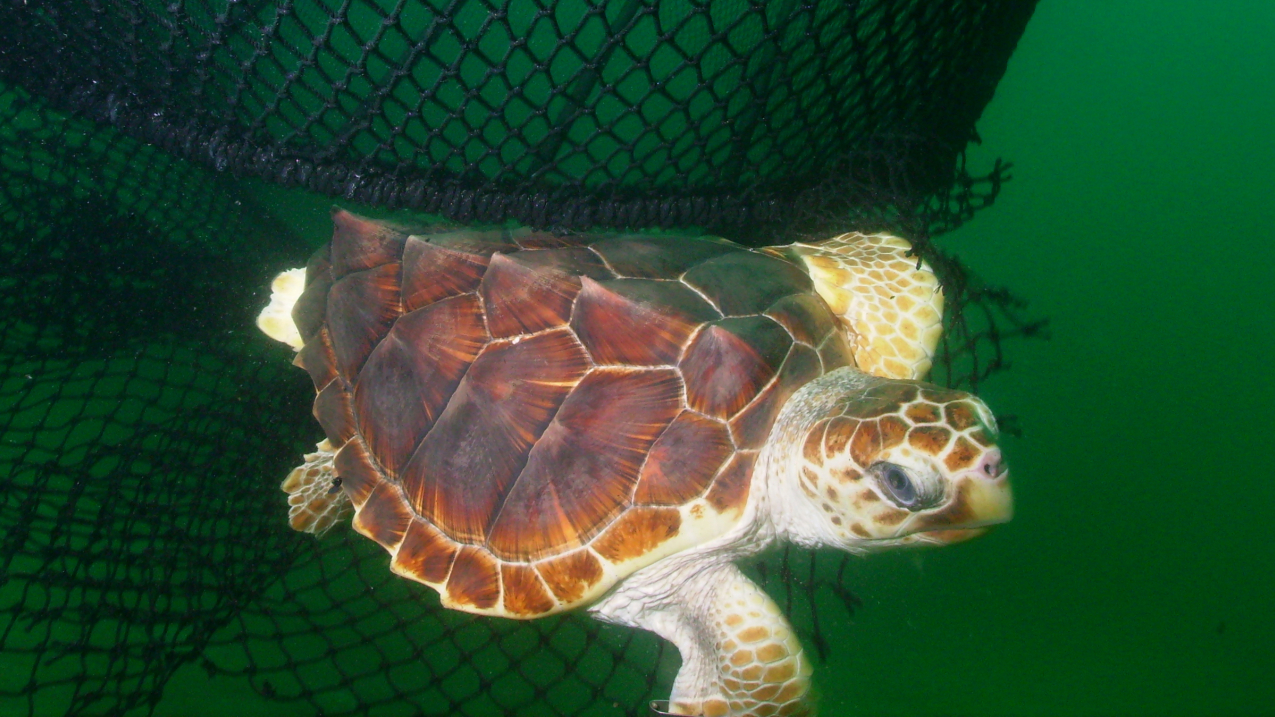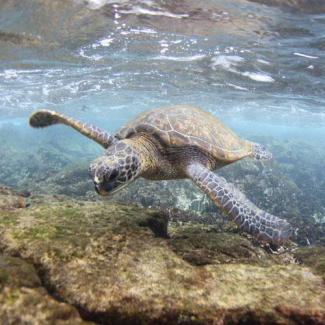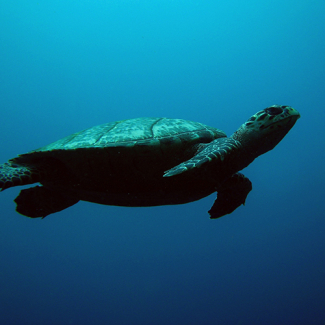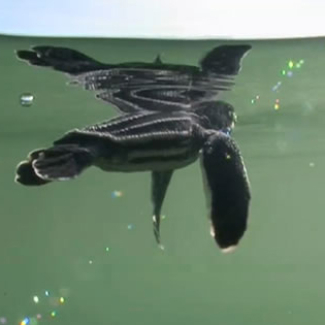Sea turtles breathe air, like all reptiles, and have streamlined bodies with large flippers. They are well adapted to life in the ocean and inhabit tropical and subtropical ocean waters around the world. Of the seven species of sea turtles, six are found in U.S. waters; these include the green, hawksbill, Kemp's ridley, leatherback, loggerhead, and olive ridley.

Loggerhead Turtle escaping a net equipped with turtle exclusion device (TED) (Image credit: NOAA)
Sea turtle nesting
Although sea turtles live most of their lives in the ocean, adult females have to return to beaches to lay their eggs. They often migrate long distances between feeding areas and nesting beaches. The six species of sea turtles in the United States are protected under the Endangered Species Act of 1973. NOAA Fisheries and the U.S. Fish and Wildlife Service (USFWS) administer the Endangered Species Act with respect to marine turtles. NOAA Fisheries leads conservation and recovery of sea turtles when they are at sea, while the USFWS has the lead when they are on nesting beaches.
Sea turtles are fascinating creatures. Learn some facts about these much loved marine reptiles.
Threats to sea turtles
Sea turtles are under threat from a variety of hazards. Major threats in the United States include damage and changes to nesting and foraging habitats, accidental capture during fishing, getting tangled in marine debris, and being hit by boats and ships. To reduce harm to sea turtles, NOAA restricts commercial fishers from using certain kinds of fishing gear (gill nets, long-lines, pound nets, and trawls) that are known to catch large numbers of sea turtles as bycatch. NOAA Fisheries and the USFWS developed plans to guide research and management to improve the health and long-term survival of each sea turtle species.
Turtle excluder devices
Sea turtles can be accidentally caught in shrimp nets and drown. To prevent this, NOAA Fisheries, along with environmental and fishing organizations developed turtle excluder devices (TED). A TED is a grid of bars with an opening at the top or bottom of a shrimp net, similar to a trap door. Small animals, like shrimp, pass through the grid bars and are caught in the net. When sea turtles and other large animals are accidentally captured in the net, they are deflected by the grid bars and can escape through an opening called a TED flap and swim away. TEDs can dramatically reduce sea turtle death and are required to use while shrimp fishing in some areas. A turtle escaping from a TED can be seen in the main photo on this page.
Most people associate sea turtles with warm, tropical destinations. You might be surprised to learn that some sea turtle species can also be found in the frigid ocean waters off Alaska.
Sea turtle conservation
The conservation and recovery of sea turtles requires cooperation and agreements to make sure these migratory animals survive. NOAA Fisheries partners with other agencies and groups, and has a national and international programs to help conservation and recovery efforts of sea turtles.
Learn what actions you can take to help save sea turtles.
EDUCATION CONNECTION
The resources in this collection provide educators and students with opportunities to explore the biology and adaptations of sea turtles, their position in marine food webs, the human and natural threats to their survival, and federal conservation efforts. In addition, these resources help students become involved in improving the sea turtles long-term survival. Activities include habitat restoration, turtle interaction etiquette, and tracking sea turtles through real-time radio telemetry data.




